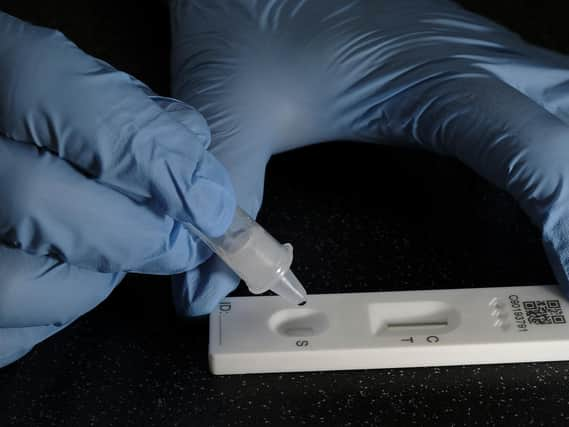Here's where Covid-19 infection rates are rising - and falling - in North Kirklees


The latest figures show 14 neighbourhoods in North Kirklees saw an increase in infections in the latest seven-day period - the first week in June.
On the other hand, eight neighbourhoods in the area saw their infection rate fall over the past week, and two neighbourhoods saw no change.
Advertisement
Hide AdAdvertisement
Hide AdAs the country looks set to keep some restrictions in place after the initial June 21 "unlocking" date, we reveal which neighbourhoods have seen the highest and lowest rate of cases per 100,000 people between June 1 and 8.
The biggest increase in cases has been in Staincliffe and Healey, which has seen its infection rate rise by 175 per cent.
The next biggest increases were in Battyeford (100 per cent), Heckmondwike North (83 per cent), Ravensthorpe (69 per cent) and Hightown and Hartshead Moor (67 per cent).
Wilton Park, Carlinghow and Brookroyd saw its infection rate rise by 56 per cent, while there was a 50 per cent jump in Batley Carr and Mount Pleasant.
Advertisement
Hide AdAdvertisement
Hide AdOther neighbourhoods where the infection rate has increased include Birstall (44 per cent), Batley Central (25 per cent), Dewsbury Moor Upper (25 per cent), Scholes and Hunsworth (25 per cent), and Earlsheaton and Chickenley (17 per cent).
In better news, Cleckheaton saw a 100 per cent decrease in its number of cases.
The infection rate in Liversedge, Littletown and Millbridge fell by 62 per cent, while Heckmondwike Town, Norristhorpe and Roberttown saw cases drop by 50 per cent.
Other areas which saw a decrease in the number of reported cases include Dewsbury Savile Town and Thornhill Lees (38 per cent), Shaw Cross and Hanging Heaton (33 per cent), Upper Batley and Soothill (33 per cent), Dewsbury Moor Lower and Westtown (25 per cent) and Dewsbury Central and Westborough (four per cent).
Advertisement
Hide AdAdvertisement
Hide AdThere was no change to the infection rate in Thornhill and in Gomersal.
It is expected that coronavirus restrictions will stay in place for another four weeks after the initial June 21 "unlocking" date, pushing so-called "Freedom Day" back until July 19 at the earliest.